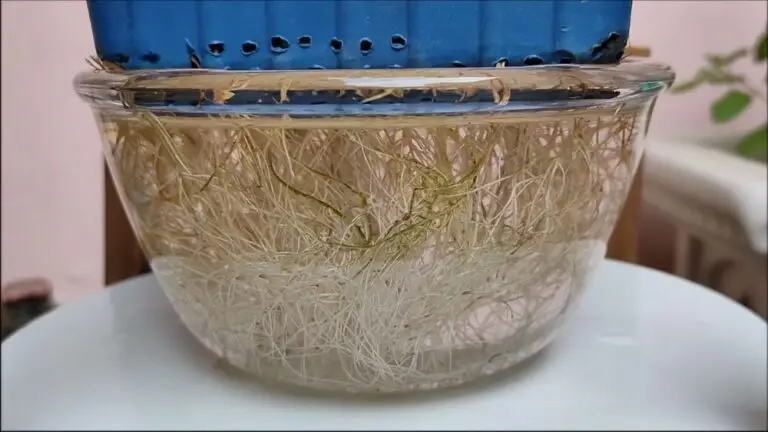
Exploring the Best Hydroponic Plants to Grow Without Soil
Welcome to the fascinating world of hydroponic gardening, where standard gardening rules are being changed and proper plant selection is one of the prerequisites.
Imagine your kitchen filled with fresh herbs all year round or your balcony full of juicy fruits and bright vegetables grown without soil. Hydroponic farming is not just a dream; it’s a real thing.
Before we begin this guide, I want to discuss how and why you should choose the right plants for your hydroponic garden. Whether you’re good at gardening or not, there’s something here for you.
Understanding Hydroponic Plants
The hydroponic system grows plants in a nutrient-rich water solution instead of traditional soil. But what makes a plant suitable for this environment with no soil? Let us break it down:
Nutrient Uptake Efficiency: Hydroponic plants get their nutrients from water, so they grow faster and better than dirt plants.
Root System Compatibility: Hydroponic plants have shorter root systems, which makes them suitable for small spaces.
Growth Rate and Size: In hydroponics, fast-growing and smaller plants do better due to the controlled environment.
Hydroponics saves water and room and lowers pest and disease risk. People without green thumbs benefit from it because it allows them to grow their plants in a smaller space.

Best Plants to Grow Hydroponically
Hydroponic gardening only works for some plants. Certain plants thrive when they are cultivated in this way. Here are the most suitable plants for your hydroponic yard that will do well:
Leafy Greens
Hydroponic leafy greens are like the welcome committee; they are easy to grow and pick. They’re suitable for hydroponic beginners and make the process fun. You might want to start with:
Lettuce: Hydroponic gardening uses lettuce. It grows rapidly, needs minor work, and can be harvested repeatedly.
Spinach: Leafy green spinach is another low-maintenance option. It is rich in nutrients and can be grown indoors.
Kale: Kale is hardy and healthy, and it grows well in a hydroponic system, giving you a steady supply of greens.
Herbal leaves
Another group that does very well in hydroponic gardening is herbs. When grown hydroponically, they grow faster, smell better, and taste more potent than traditionally grown plants.
Basil: Many cooks enjoy basil, which is a fragrant herb that grows well in soil-less systems.
Mint: Growing mint hydroponically will prevent it from taking over your yard the way it would in a regular garden.
Cilantro: Cilantro is essential to many dishes. It can be finicky, but it does well in hydroponic gardens.
Fruits
Yes, you can grow fruits hydroponically! Even though they take more work and time, the benefits are great.
Strawberries: If the conditions are right, strawberries can bear fruit all year in vertical hydroponic systems.
Tomatoes: Hydroponic tomatoes can be very rewarding and tasty, and many varieties are available.
Cucumbers: These fruits grow quickly and produce a lot of fruit. They do very well in hydroponic systems.
Root Vegetables
Root vegetables can also grow in hydroponic systems, which may surprise you. However, they need more room and care.
Radishes: Radishes grow well and offer quick results to hydroponic newbies.
Carrots: You can grow sweet, crunchy carrots in your hydroponic garden with a few adjustments to the setup.

Choosing the Right Plant for Your System
Some hydroponic setups work better for certain plants than others. Picking the right plants depends on many things. These include the size of the system, the amount of light available, and the grower’s knowledge level. When planning your garden, you should never forget these things to get the best results.
It opens up a world of possibilities with this innovative farming method. You can have a plentiful harvest if you set up your garden correctly and choose the right plants.
Hydroponic Garden Plant Selection Guide
Picking the right plants is like choosing teammates for a relay race: you want the most reliable people on your team to make it to the finish line. Here are some helpful tips to help you choose the right plants for your hydroponic garden:
Consider Your Space
Vertical vs. Horizontal: Some plants, like cucumbers or tomatoes that grow on vines, do better in vertical systems. Other plants, like lettuce and herbs, do better in horizontal systems.
Size Matters: Keep in mind how large the plants will be when they’re fully grown to avoid crowding and make sure each one gets enough food and light.
Light It Up
Understand light Needs: Plants have different light needs. A little light is best for leafy greens, but fruits need more.
Artificial vs. natural: Think about whether you want natural or artificial light. Your environment can affect what kinds of plants thrive there.
Nutrient Requirements
Feed Your Plants: Plants need different nutrients. Leafy greens don’t need as much care, so they’re suitable for beginners. On the other hand, fruiting plants may require more specific nutrient solutions.
Consider these factors to create a productive and harmonious hydroponic garden.
Setting Up Your Hydroponic System for Success
Setting up your hydroponic system is like laying house foundations. It needs to be strong, effective, and able to handle what’s coming. Here’s how to grow your garden:
Choose the Right System
Wick System: Simple and effective for small plants that don’t bear fruit, like lettuce and herbs.
Deep Water Culture (DWC): Excellent for plants that need a lot of water and are fast-growing.
Nutrient Film Technique (NFT): This method works well for herbs and leafy greens with small root systems.
Ebb and Flow: This method is flexible and can be used with many plants, even fruitful ones.
Lighting the Way
LED grow lights: They work well and last a long time, making them an excellent choice for most hydroponic plants.
Hi-Intensity Discharge (HID) lights: They are powerful but generate heat.
Choose According to Plant Needs: For the best growth, make sure the lighting you choose fits your plants’ needs.

Water and Nutrient Management
Consistent Monitoring: Keep an eye on pH and nutrient levels to ensure your plants get what they need.
Regular Changes: Maintain a balanced nutrient solution and make sure harmful substances do not build up.
Hydroponic gardens will produce lush, productive meadows if you set them up correctly.
Best Practices for Growing Hydroponic Plants
Hydroponically growing plants can feel like something out of a sci-fi book from the future, but if you follow these tips, you’ll succeed:
Starting Strong
Healthy Start: Start with seeds or plants that are healthy and free of disease. In turn, this increases your garden’s chances of success.
Root Care: Keep your plant’s roots moist but not soaked to prevent root rot.
Optimizing Plant Health
Pruning: Pruning removes dead and dying leaves so that the plant can grow new leaves and fruits.
Pest Management: Use natural methods to get rid of pests quickly to keep the ecosystem healthy.
Monitoring and Adjusting
Pay attention: Watch how your plants grow, their leaf color, and overall health. It shows whether they’re getting the right amount of what they need or if there’s a need for more.
Fine-tuning: As your plant’s needs change, adjust their light, nutrients, and water accordingly.
Harvesting Wisely
Timing is Everything: Pick at the right time to get the most taste and yield. To do so often means picking leaves or fruits when they’re still immature.
Continual Harvesting: When picking herbs and leafy greens, “cut and come again” to encourage re-growth.
In addition to growing plants hydroponically, you will also benefit your home or backyard environment.
Advanced Tips for Experienced Gardeners
If you’ve tried hydroponics before and want to explore it further, these advanced tips can help. Your hydroponic garden can produce excellent results if you push it to its limits.
Experiment with Exotic Varieties
Try Exotic Herbs: You could try Thai basil, lemon balm, or tarragon instead of basil and cilantro. These can give your food delicious flavors and your yard an exotic look.
Rare Fruits and Vegetables: Your hydroponic garden should have rare or heirloom plants. You can talk about them and enjoy a unique tasting experience.
Optimize Your Environment
Microclimate Management: Use sensors to monitor and change CO2, humidity, and temperature to create the right environment for each type of plant.
Advanced Lighting Techniques: You could use different light spectrums to speed up growth, flowering, or fruiting.
Automate for Efficiency and Precision
Automated Nutrient Delivery: Set up systems that change the pH and amount of nutrients based on what the plants need right now.
Remote Monitoring: You can monitor your garden from anywhere to ensure the plants always have what they need.

FAQs
What Can Be Grown Hydroponically?
You can grow almost any plant hydroponically, but the most common ones are leafy greens, herbs, and some fruits and veggies. It is because they are easy to care for and grow quickly.
Are There Any Plants Not Suitable for Hydroponic Systems?
Although most plants can grow in hydroponic systems, it might not be possible for plants with deep roots or that need a lot of room, like big trees.
How Do I Transition My Traditional Garden Plants to Hydroponics?
Starts with seeds or young plants. Gently wash their roots and let them adjust to the hydroponic system over time. Make sure they get enough light and food and are well supported.
What Are the Most Popular Hydroponic Plants?
Start with leafy greens like spinach and lettuce, herbs like basil and mint, and easy-to-grow veggies like cucumbers and tomatoes.
Can I Grow Hydroponic Plants Outdoors?
You can set up a hydroponic system outside, where it is safe from adverse weather and bugs.
What Are the Best Indoor Hydroponic Plants?
Herbs, leafy greens, and small fruiting plants like peppers and strawberries do well in hydroponic indoor gardens.
How often should I change my hydroponic system’s water?
It depends on how extensive your system is and the plants you have. It is advisable to change 20 to 30% of the water every two weeks to ensure balanced and clean nutrition.
As a final note
Anyone who likes gardening or is just starting can do many things with hydroponic farming. If you know what your water-grown plants need and adjust your methods to meet those needs, you can turn any area into a lush, productive garden. Remember that hydroponic gardening is a way to learn and try different things. The more plants you grow, the more growth you will have in the yard and on your table.
Click-to-Action
Are you ready to start your soil-less growing journey? Don’t waste time turning a corner of your room into a green oasis. You can also make your outdoor hydroponic system work better. Share your achievements, challenges, and lessons learned along the way. Join online forums to talk with other hydroponic gardeners and add to the growing hydroponic garden group. Let’s learn more about hydroponic gardening’s endless possibilities together. Take a dip in the water; it’s lovely!

Meet Milan Cole, your urban gardening pro!
Milan Cole, chief content writer at Maven Gardening and an urban gardening expert, is passionate about helping city dwellers cultivate their green thumbs. Armed with extensive horticultural knowledge, Milan provides practical advice for overcoming urban gardens’ challenges, like limited space, water scarcity, and reduced sunlight.
His expertise extends beyond traditional methods, encompassing innovative approaches like hydroponic and aquaponic systems and sustainable gardening practices. Milan skillfully adapts these techniques to urban environments, considering factors like pollution and climate change.
In his clear and concise writing, Milan offers actionable solutions for anyone wanting to bring life to an urban space. He shares valuable insights into growing herbs in tight spaces, maximizing the potential of window boxes, and transforming even the most miniature balconies into thriving green oases.
Milan’s guidance is straightforward and practical, making it ideal for anyone looking to cultivate their own urban garden, regardless of prior experience.
Join Milan Cole on your journey to metropolitan Eden!
